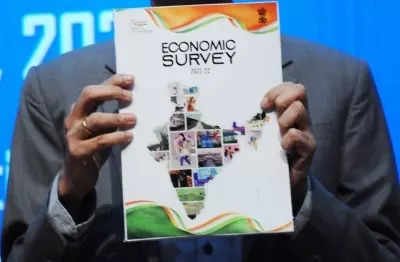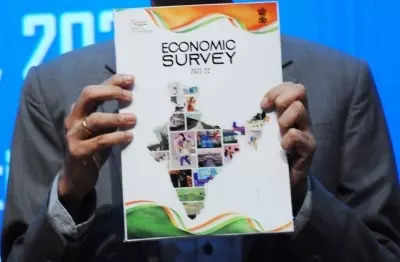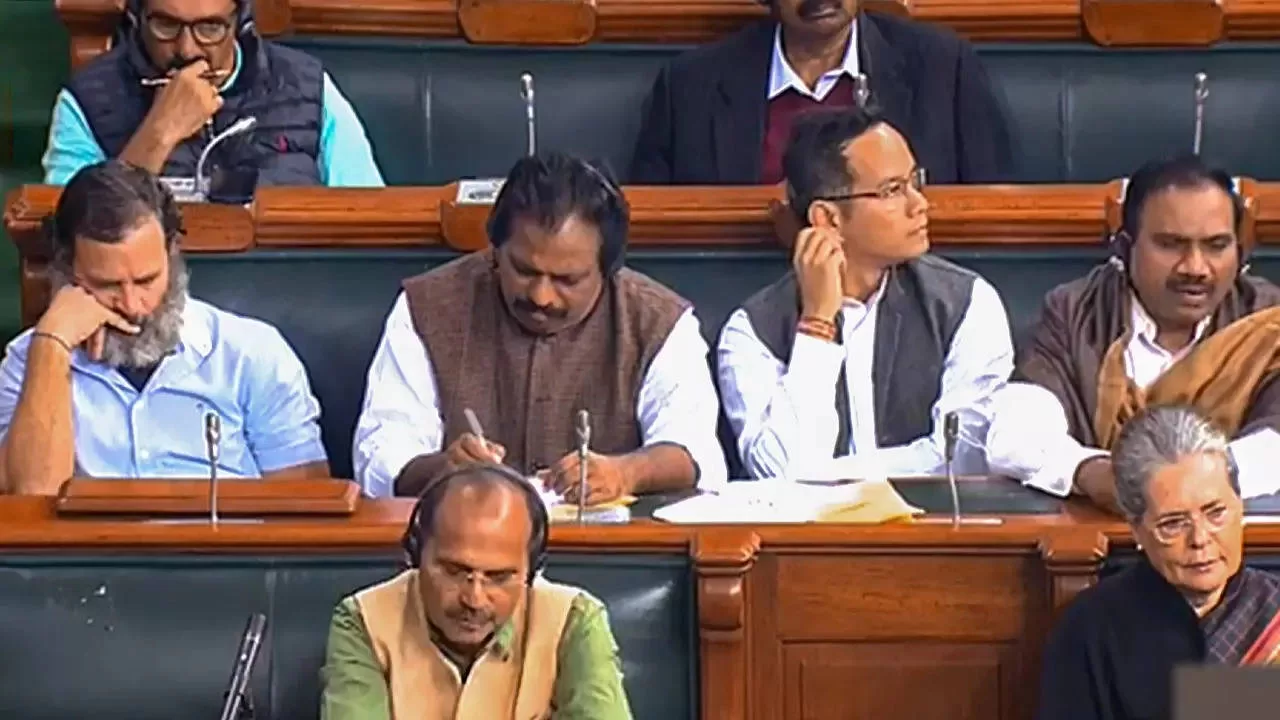NEW DELHI: Finance Minister Nirmala Sitharaman on Tuesday presented the Economic Survey in Parliament ahead of the Union Budget to be presented on Wednesday.
The survey forecasted India’s economic growth at 6-6.8% for the next fiscal year starting April 1, lower than the 7% projected for the current year due to the expected impact of the global slowdown on exports. Despite this, India’s growth is still expected to be the fastest among major economies.
The Economic survey is mainly the government’s review of how the economy fared in the past year.
Following are the highlights of the Economic Survey 2022-23:
The survey forecasted India’s economic growth at 6-6.8% for the next fiscal year starting April 1, lower than the 7% projected for the current year due to the expected impact of the global slowdown on exports. Despite this, India’s growth is still expected to be the fastest among major economies.
The Economic survey is mainly the government’s review of how the economy fared in the past year.
Following are the highlights of the Economic Survey 2022-23:
- India’s economy to grow 6.5 pc in 2023-24, compared to 7 pc this fiscal and 8.7 pc in 2021-22
- India to remain the fastest growing major economy in the world
- GDP in nominal terms to be 11 pc in next fiscal * Growth driven by private consumption, higher capex, strengthening corporate balance sheet, credit growth to small businesses and return of migrant workers to cities
- India third largest economy in PPP (purchasing power parity) terms, fifth largest in terms of exchange rate
- Economy has nearly “recouped” what was lost, “renewed” what had paused, and “renerengised” what had slowed during the pandemic and since the conflict in Europe
- Real GDP growth to be in the range of 6-6.8 pc next fiscal depending on global economic, political developments
- India’s recovery from the pandemic was relatively quick, growth next fiscal to be supported by solid domestic demand, pick up in capital investment
RBI projection of 6.8 pc inflation this fiscal outside the upper target limit, not high enough to deter private consumption, also not too low to weaken inducement to invest- Borrowing cost may remain ‘higher for longer’, entrenched inflation may prolong tightening cycle
- Challenge to rupee depreciation persists with the likelihood of further interest rate hikes by the US Fed *
CAD may continue to widen as global commodity prices remain elevated, economic growth momentum stays strong - If CAD widens further, rupee may come under depreciation pressure
- Overall external situation to remain manageable * India has sufficient forex reserves to finance CAD and intervene in forex market to manage rupee volatility
- Elevated downside risks to global economic outlook as inflation persisting in advanced economies and hints of further rate hikes by central banks
- Inflation did not “creep too far above” tolerance range compared to several advanced nations
- The growth in exports has moderated in second half of current fiscal; the surge in growth rate in 2021-22 and first half of current fiscal led to production processes shifting gears from ‘mild acceleration’ to ‘cruise mode’
- Slowing world growth, shrinking global trade led to loss of export stimulus in the second half of current year
- Schemes like PM KISAN, PM Garib Kalyan Yojana significantly contributed to lessening impoverishment
- Credit disbursal, capital investment cycle, expansion of public digital platform and schemes like PLI, National Logitics Policy and PM
Gati Shakti to drive economic growth - Bank credit growth likely to be brisk in FY24 on back of benign inflation, moderate credit cost * Credit growth to small businesses remarkably high at over 30.5 pc in January-November, 2022
- Housing prices firming up after release of pent-up demand, decline in inventories
- Central govt capex grew 63.4 pc in April-November of current fiscal
- India’s economic resilience has helped it withstand the challenge of mitigating external imbalances caused by the Russia-Ukraine conflict without losing growth
- momentum
- Stock market gave positive retruns in calendar year 2022 unfazed by FPI withdrawal
- India withstood extraordinary set of challenges better than most economies
- After a dip in FY21, GST paid by small businesses has been rising and now crossed pre-pandemic levels reflecting the effectiveness of targeted government intervention
- Private consumption, capital formation led economic growth in current fiscal has helped generate employment; urban employment rate declined, while Employee Provident Fund registration rose.






